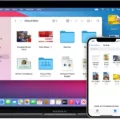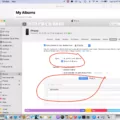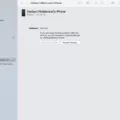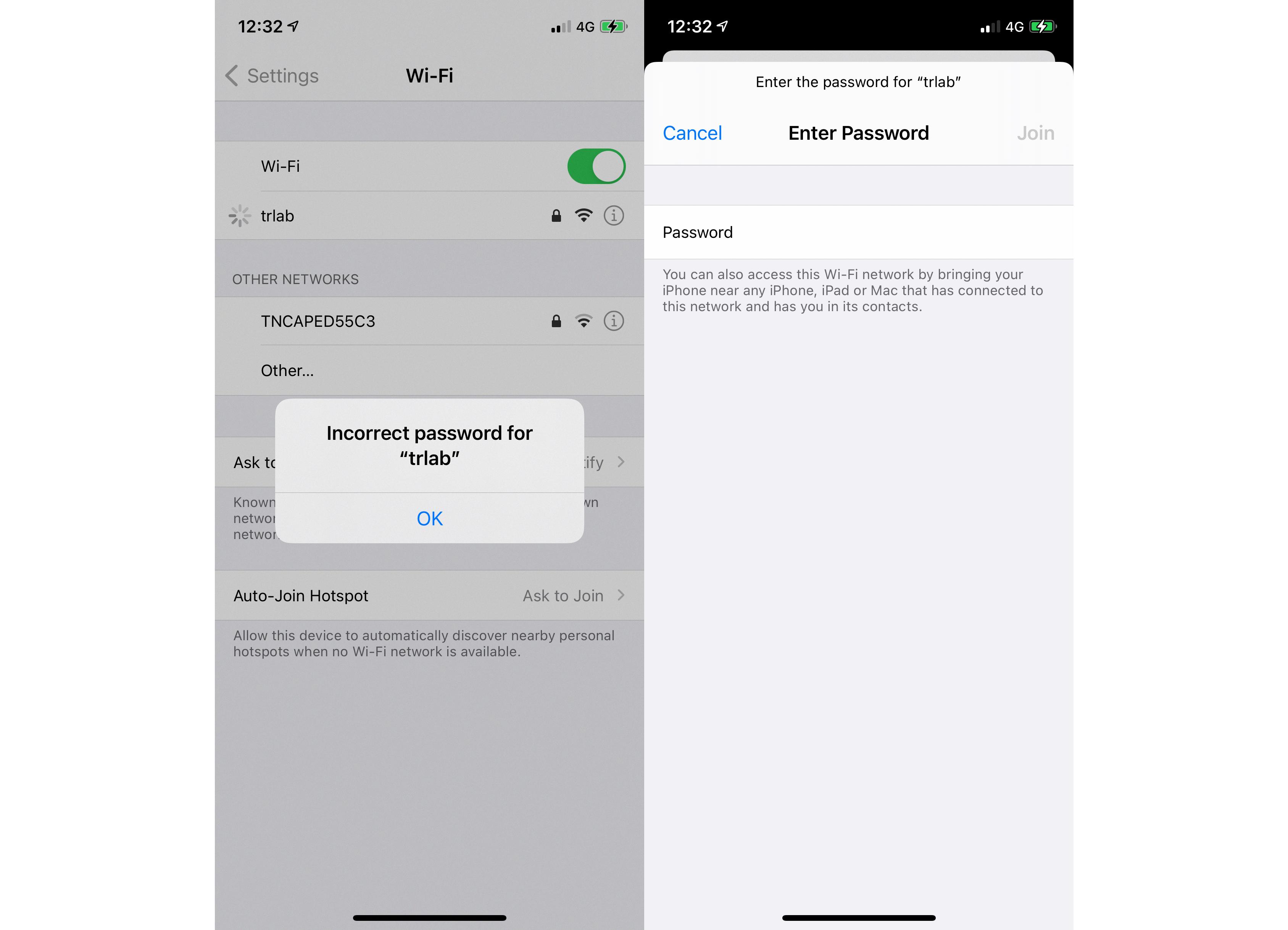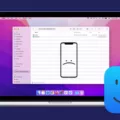One of the most frustrating problems that iPhone users face is when their device keeps disconnecting from their Mac. This can be a major inconvenience, especially when you’re trying to transfer files or perform backups. Luckily, there are a few steps you can take to troubleshoot and fix this issue.
1. Check Cables and Ports:
The first thing you should do is check the cables and ports you’re using to connect your iPhone to your Mac. Make sure that the cable is securely plugged in on both ends and that there are no visible signs of damage. Additionally, try using a different USB port on your Mac to see if that resolves the issue. Sometimes, faulty cables or ports can cause intermittent connectivity problems.
2. Change Finder Preferences Setting:
If the issue persists, you can try changing the Finder Preferences setting on your Mac. Go to Finder, click on Preferences, and then select the Sidebar tab. Look for the “Devices” section and make sure the box next to “CDs, DVDs, and iOS Devices” is checked. This ensures that your iPhone is recognized and connected properly.
3. Reset iPhone Location & Privacy Settings:
Sometimes, incorrect location and privacy settings on your iPhone can interfere with its connection to your Mac. To fix this, go to Settings, tap on General, and then select Reset. From there, choose the option to Reset Location & Privacy. Keep in mind that this will reset your location and privacy settings back to their default values, so you may need to reconfigure them afterward.
4. Restart usbd Process:
If the previous steps didn’t resolve the issue, you can try restarting the usbd process on your Mac. This process handles USB device connections and restarting it might help fix any glitches. To do this, open the Terminal app on your Mac and enter the command “sudo killall -STOP -c usbd”. Afterward, enter the command “sudo killall -CONT usbd”. Restart your Mac and check if the issue is resolved.
5. Reset SMC/NVRAM on Mac:
Resetting the System Management Controller (SMC) and non-volatile RAM (NVRAM) on your Mac can sometimes fix connectivity issues. The steps to do this vary depending on your Mac model, so it’s best to refer to Apple’s support documentation for detailed instructions.
6. Create a New Admin Account on Mac:
In some cases, the issue might be related to your user account settings on your Mac. To check if this is the case, you can create a new admin account and see if the connection problem persists. If the issue is resolved with the new account, it indicates that there might be a problem with your original user account.
7. Contact Apple Support:
If none of the above solutions work, it’s recommended to reach out to Apple Support for further assistance. They have access to advanced troubleshooting tools and can provide personalized guidance to help resolve the issue.
A disconnecting iPhone can be a frustrating problem, but by following the troubleshooting steps outlined above, you should be able to resolve the issue. Remember to check your cables and ports, adjust your Finder Preferences, reset your iPhone’s location and privacy settings, restart the usbd process, reset SMC/NVRAM on your Mac, create a new admin account, and seek professional help if needed.
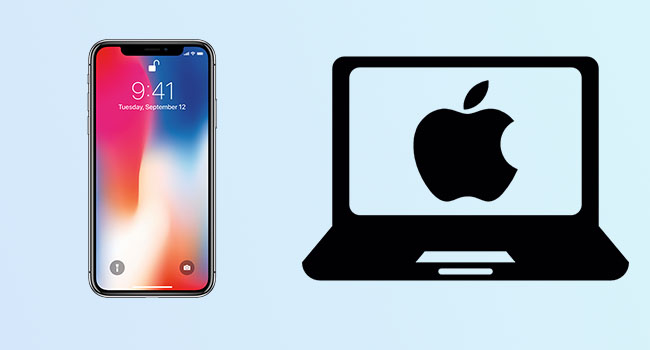
How to Turn Off USBD?
To turn off USB debugging on your device, you will need to access the Developer options in your system settings. Follow the steps below to disable USB debugging:
1. Open the Settings app on your device.
2. Scroll down and tap on the “System” option.
3. In the System settings, locate and tap on “Developer options.”
4. If you don’t see the Developer options, you may need to enable them first. To do this, go to “About phone” or “About tablet” in the System settings. Look for the “Build number” or “Software information” option and tap on it seven times until you see a message saying “You are now a developer.”
5. Once you are in the Developer options, scroll down to find the “USB debugging” setting.
6. Tap on the switch next to USB debugging to turn it off. The switch should be in the off position when it is grayed out or moved to the left.
7. Confirm your action if prompted.
By following these steps, you should be able to successfully disable USB debugging on your device.
How to Disable USBD On Mac?
To disable USBD (USB Device) on a Mac, you can follow these steps:
1. Click on the Apple menu in the top left corner of your screen and select “System Preferences.”
2. In the System Preferences window, click on “Security & Privacy.”
3. In the Security & Privacy window, click on the “Security” tab.
4. Click on the “Advanced” button located at the bottom right corner of the window.
5. A new window will appear with advanced security options. Look for the “Disable USB Device” option and check the box next to it.
6. Once you have checked the box, click on the “OK” button to save the changes.
7. You may be prompted to enter your administrator password to confirm the changes.
By following these steps, you will successfully disable the USBD feature on your Mac. This will prevent any USB devices from being recognized or connected to your Mac.
Why Does Your iPhone Keep Connecting And Disconnecting From Computer?
There could be several reasons why your iPhone keeps connecting and disconnecting from your computer. Here are some possible causes:
1. Faulty or damaged cable: The cable you are using to connect your iPhone to the computer may be faulty or damaged. Check for any visible signs of wear and tear on the cable, such as frayed wires or a loose connection. If you suspect the cable is the issue, try using a different cable to see if the problem persists.
2. USB port issues: The USB port on your computer may be experiencing problems. Try connecting your iPhone to a different USB port on the computer to see if that resolves the issue. Additionally, make sure the USB port is clean and free from any debris that could interfere with the connection.
3. Outdated or incompatible drivers: Ensure that you have the latest drivers installed on your computer for your iPhone. Outdated or incompatible drivers can cause connection issues. You can check for driver updates through the device manager on Windows or the software update section in the System Preferences on Mac.
4. Software conflicts: Sometimes, conflicting software on your computer can interfere with the connection between your iPhone and the computer. Ensure that you don’t have any third-party software or firewalls that might be blocking the connection. Temporarily disabling any security software or firewalls can help identify if they are causing the problem.
5. iPhone software issues: If your iPhone’s software is not up to date or has any glitches, it can cause connectivity problems with the computer. Make sure your iPhone is running the latest version of iOS by going to Settings > General > Software Update.
6. Hardware issues: In some cases, there may be hardware issues with either your iPhone or your computer. If you have access to another computer, try connecting your iPhone to see if the issue persists. If it does, there might be a hardware problem with your iPhone, and you may need to contact Apple Support for further assistance.
7. Power-related issues: Insufficient power supply from your computer’s USB port can also cause intermittent connections. Ensure that your computer is plugged into a power source and not running on battery power alone. Additionally, avoid using USB hubs or extension cables, as they can sometimes cause power-related issues.
If none of these solutions resolve the issue, it is recommended to consult Apple Support or visit an authorized service center for further troubleshooting and assistance.
Conclusion
When encountering issues with the USB connection between an iPhone and a Mac, it is important to consider various troubleshooting steps. One potential solution is to check the cables and ports for any physical damage or loose connections. Sometimes, a faulty cable can cause intermittent failures, leading to frequent disconnections.
Another step is to change the Finder Preferences setting on the Mac. By adjusting the settings, it is possible to ensure a more stable and reliable connection between the devices.
Resetting the iPhone’s Location & Privacy settings can also help resolve the issue. This step allows the device to re-establish the necessary permissions and configurations for a successful USB connection.
If the problem persists, restarting the usbd process on the Mac can be attempted. This process helps refresh the USB drivers and can potentially resolve any software-related conflicts causing the disconnection problem.
In more severe cases, resetting the SMC (System Management Controller) or NVRAM (Non-Volatile Random-Access Memory) on the Mac might be necessary. These steps can help restore the system’s hardware and software settings to their default state, potentially fixing any underlying issues causing the disconnection problem.
Creating a new admin account on the Mac can also be attempted as it can help isolate any software conflicts that may be causing the issue. By using a fresh account, it becomes easier to identify whether the problem lies with the user account settings or other system-wide configurations.
If all else fails, it is advisable to contact Apple Support for further assistance. They have the expertise to provide specific troubleshooting steps or even recommend hardware repairs if necessary.
Resolving the issue of frequent disconnection between an iPhone and a Mac requires a systematic approach. By checking cables, adjusting settings, resetting configurations, and seeking professional support if needed, it is possible to fix the problem and maintain a stable USB connection between the devices.

